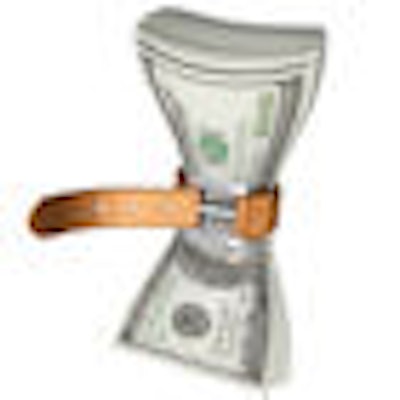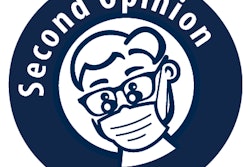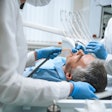
In these tough economic times, everyone's looking for a good deal. While dentists may be tempted by ads in dental magazines and on the Internet offering products at discounts of 10% to 50%, they should be aware that the old maxim very likely applies: If it seems too good to be true, it probably is.
Deeply discounted products are often illegally imported gray-market goods or even counterfeit materials that could endanger patients or expose dentists to legal liability for using dental materials that are not approved for sale in the U.S.
“This is healthcare, not a pair of socks.”
— John O'Neill, vice president of sales,
GC America
"What if these discounted products are expired, altered, or even counterfeit, and you have a material failure -- such as postoperative tooth sensitivity -- in a group of patients?" Gordon Christensen, D.D.S., M.S.D., Ph.D., recently wrote in the Journal of the American Dental Association (June 2010, Vol. 141:6, pp. 712-715).
Gray-market products -- often zirconia, ceramic materials, composites, and glass ionomers -- are showing up more and more, according to industry experts, and dentists may not even know they're using them.
For example, most manufacturers offer some type of zirconia, which is used in ceramic restorations and implants and can be obtained from only a few sources in the world, according to Bennett Napier, co-executive director of the National Association of Dental Laboratories (NADL).
"If the price point of the raw material is significantly lower, then there's got to be a question asked: 'How did you do that?' There's not a lot of price variation in the marketplace," he said in an interview with DrBicuspid.com. "It's a supply-and-demand issue."
And he believes the gray market for dental materials is growing. "I think more dentists and labs are looking at the ability to compete by cutting operating expenses and may be looking at other suppliers that they haven't worked with before. You have to do your due diligence."
Identify the source
|
How to spot counterfeit products Potentially gray-market or counterfeit dental supplies can be identified in several ways, according to Dr. Gordon Christensen (Journal of the American Dental Association, June 2010, Vol. 141:6, pp. 712-715).
To avoid the problems potentially related to purchasing gray-market or counterfeit products, Dr. Christensen recommends:
|
Brand-name products are sold at lower prices in Latin America, Eastern Europe, or Asian countries than in the U.S., said John O'Neill, vice president of sales for dental equipment manufacturer GC America. Unscrupulous dealers then buy the materials in these countries and illegally import them into the U.S., selling the gray-market products at reduced prices.
"Many, many distributors sell products in the U.S. and Canada that don't have that product line," he told DrBicuspid.com. "If you don't buy from an authorized distributor of that manufacturer, then you're not really sure what you're getting."
Unscrupulous distributors are savvy about copying brand-name products, making gray-market or counterfeit products hard to detect, O'Neill said. "They're very sophisticated; they know how to tamper with packages, put on fake bar codes, or hide bar codes. There are a million tricks they play."
The quality of illegally imported products may have been jeopardized because of expired shelf life, improper storage, or poor handling. "When it sits on boat for two years, then sits in some garage, you really don't know what you're getting, and nobody can guarantee quality," O'Neill said.
He estimates that the gray market is a multimillion dollar business.
GC America recently won lawsuits against AR Dental and Kings Two Dental Supply that charged the companies with improper importing and distribution of GC America products. Both companies subsequently agreed not to sell, distribute, or import unauthorized GC America products.
"These suits demonstrated that these actions are wrong and we can take action against people who are selling our products that are illegally imported," O'Neill said.
Fighting back
The dental industry is regulated by the FDA to ensure that the dental products used and placed in patients' mouths -- considered to be medical devices by the agency -- meet accepted standards.
Gary Price, CEO of the Dental Trade Alliance, which represents 200 manufacturers, distributors, and labs, said he has discussed the issue with the FDA and is producing a report for the agency on how to combat the proliferation of gray-market and counterfeit products.
"We want to get them to at least make pronouncements about the need to be careful about these products," he said, adding, "dentists bear some responsibility, too."
Some states have passed laws requiring the disclosure of consumer product information, including queries about where products are obtained and what ingredients they contain.
Sometimes dentists aren't getting what they paid for, and the material doesn't last as long because the quality is lower. For example, high noble alloys, which last longer and are made of stronger material, are more expensive than base alloys, Napier said.
He pointed out that the two classes of alloys are also tied to insurance reimbursement.
"If somebody asks for high noble but gets base noble, they get a higher insurance reimbursement. But if somewhere in the supply chain base noble is substituted, it could result in insurance fraud," Napier said. Although he has seen such cases, they are hard to uncover because it's difficult to track down the source, he said. "It's a needle in a haystack."
Disreputable distributors gyp both the dentist who's not getting the premium quality he paid for and the patient who may have to get a replacement sooner than necessary.
"Each material has a longevity that it's expected to last in the mouth," Napier observed. A dentist may tell the patient that the restoration will last 20 years, but if something inferior was placed, it may only last five to 10 years.
Patient risks
Counterfeit materials that haven't gone through proper protocols and testing could fail in the mouth, resulting in cracks or leaching of material in a patient's mouth, according to Napier.
"It may not jeopardize a patient's life, but you've cost them money and inconvenience so that's an important thing to consider as well," Price said.
He cited several factors which have contributed to the growing gray market: increased foreign trade, the North American Fair Trade Agreement with Mexico, the bad economy, and the fact that many manufacturers are more restrictive in authorizing distributors to carry their products.
The NADL, the ADA, and dental manufacturers have pledged to work collaboratively to make sure dentists know what questions to ask and what to look for to ensure they're getting what they asked for, Napier said.
A 2008 ADA survey on lab issues found that more dentists are seeking information on the source of dental products because patients are asking for it, mainly because of media coverage of dangerous levels of lead in imported crowns, Napier noted.
"This is healthcare, not a pair of socks," O'Neill said. "This stuff is going to be used in peoples' mouths. These are medical devices that are legally regulated by the government."
Copyright © 2010 DrBicuspid.com



















